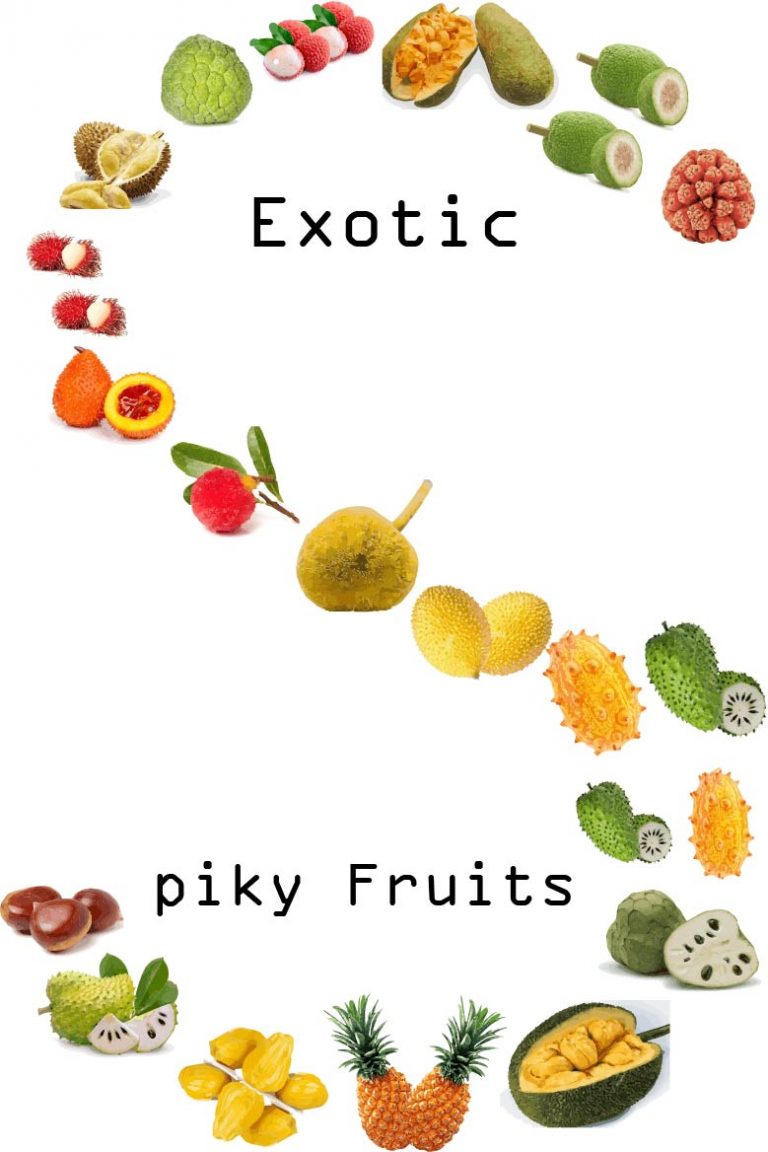11 Yellow Tropical Fruits You Should Know About
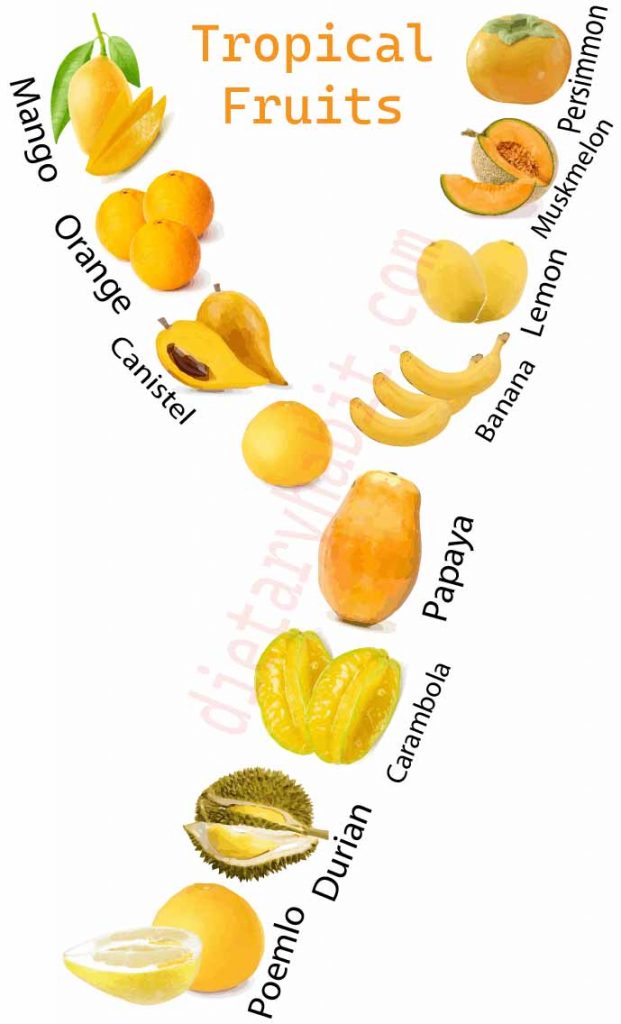
The tropical region has the blessing to produce the most flavorful and exotic fruits. Rain and humidity help the plants thrive in these low areas. The area between the tropic of cancer and the tropic of Capricorn constitutes this area that covers some parts of north and south America, Asia, and Africa. Yellow fruits are widely available in the market, but which are the tropical ones? Don’t worry, here we’ll introduce you to the exotic yellow tropical fruit of all seasons.
Everybody knows that tropical fruits are alluring and delightful, but some yellow tropical fruits are considered the most exotic, beguiling, and graceful. They have an aesthetic appearance, royal shape, graceful pulp, and enticing aroma. The exquisite combo of the yellow peel and flavorful pulp of these tropical fruits will make you yearn for them again and again. Such exotic yellow-colored tropical fruits also help in building a healthy dietary habit.
Though tropical fruits are wrapped in different tints, such as pink, green, red, blue, orange, and white, the best ones mostly take on the yellow hue. The tropical environment downpours these yellow fruits with an exciting nutrition profile and tons of health benefits. However, the drawback is that they don’t last long enough though we’ve cutting-edge storage technologies.
Without further ado, let me introduce you to the enticing yellow-colored tropical fruits you can find easily in your next-door stores.
How To Identify Yellow Mushroom
1. Banana

One of the most available and widely-known yellow tropical fruits is the banana. From east to west, everybody seems to know this ravishing beauty. Banana is the perfect example of “simple but gorgeous.” It’s easy to eat, delightful to taste, and promising to health.
This yellow tropical fruit is easy to peel as the yellow skin is loosely connected with the white pulp. Just pull back the skin from the top with a finger, and the skin will quickly come off. You can slice it into pieces and enjoy it both raw and cooked. Also, remove the white threads, which can taste bitter and weird.
If you want a better source of potassium, a banana is the first option. It’s delightful as well as packed with a balanced nutrition profile. It’s enriched with dietary fiber that can help you maintain bowel habits.
2. Orange
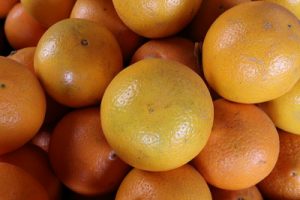
Orange grows abundantly in the US. They are the leading producers of this sweet, little, yellow-orange fruit. The more it matures, the more it takes on the orange hue from the yellow tint.
In many Asian countries, it’s kind of a tradition to gift oranges when they visit people as guests. Mothers also try to habituate their children to eat an orange daily. To be honest, it’s a good habit all should follow.
Oranges are easy to peel though the orange peel seems complicated. Put your two fingers on top of the orange to peel the skin and exert a little pressure outward. The skin will break off eventually. However, I don’t particularly appreciate peeling this yellow tropical fruit for its messy interior. I can’t eat them without removing the white threads and seeds. If someone does this for me, I’ll gulp down a ton, maybe.
3. Lemon
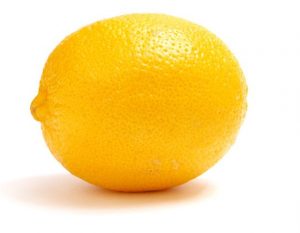
One of the adorable yellow tropical fruits is lemon which has a captivating fragrance. Lemon is used for lots of specific purposes. Everyone loves the lemon flavor, whether in food, perfumes, drinks, or insecticides. This multi-purpose yellow-colored tropical beauty can cut your extra fat significantly.
You can eat lemon in various ways. Take a knife and slice the lemons into halves. Squeeze the lemon into a glass of water and drink it. Or you can squeeze the drops into your meal plate. In Asian culture, if you want the best taste of biryani, squeeze a juicy lemon into it.
Lemon usually is green, but it becomes yellow when it matures. And the matured lemon is full of antioxidant components.
4. Star fruit
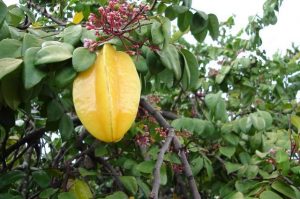
Star fruit literally looks like a star when it’s cut into slices. It’s also known as carambola or kamranga in some countries. Star fruit is the epitome of intense flavor for a yellow tropical fruit. It tastes sweeter than before when it becomes yellow, though with a sour hint.
You can eat carambola raw and fresh. You don’t even need to peel off the skin. Just wash it with clean water and gobble up it before a carambola lover snatches it away.
The carambola tree starts fruit at an early age. If you want to have the sweet flavor, you’ve to wait until it ripens in the tree. But this yellow tropical fruit is native to Southeast Asia. If you want to get it to the US, the fruit should be harvested raw and preserved accordingly. That’s why you may get a bland taste that is not the original.
5. Papaya
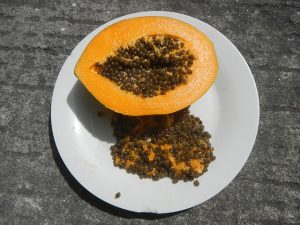
Papaya is a favorite of mine for its flavorful sweet taste. It’s the fruit with yellow skin and a pink pulp. Thanks to the Portuguese colonizers who introduced it worldwide. Papaya is mainly a fruit of the South American tropical terrain. When the Spanish and the Portuguese colonized them, they became fans of this yellow-orange tropical fruit, papaya.
You can eat the raw papaya by cooking while the ripe one can be eaten fresh and fast. Using papaya in cuisine will soften the ingredients like meat and quickly boil them.
Papaya is a healthy fruit that is available in tropical areas. This yellow tropical tree is easy to grow. You can plant it before the rainy season. The tree is so kind to keep you waiting for papaya. So they start to fruit when they’re little.
6. Mango
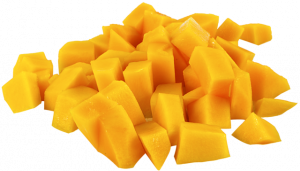
Mango is another tropical fruit yellow in color. It’s a national fruit in some Asian countries for its sobering beauty and delightful taste. Though this smothering yellow tropical fruit is native to Southeast Asia, it can grow in some parts of America, especially southern California.
The matured mango is yellow in color though it goes through green, yellow, and orange variations in its lifetime. When it’s raw, it tastes intensely tart. There’s a popular recipe that uses chilies, and salts to erase the tart effect of raw mangoes to some extent.
Mango has established a respectable position in the tropical fruit list for its uncompromising taste and graceful texture. There’s a whole different bunch of mangoes that taste different from each other.
7. Muskmelon
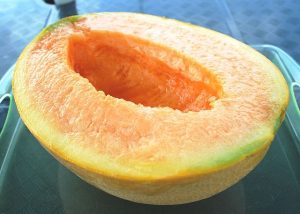
Muskmelon is a sibling in the family of melons that can come with or without a musky aroma. But it has a sweet and delightful taste. This yellow tropical fruit mainly grows in Southeast Asia, where it finds the humidity and temperature at their best. The gray skin of this tropical fruit carefully covers the yellow core.
Muskmelon should be cooked to get its best taste. However, you can have it raw in some kind of drink or salad. The skin is tightly attached to the pulp, which has a hollow chamber surrounded by black seeds. It seems like a yellow tropical fruit with black seeds. So muskmelon is one of those kinds of fruits.
It’s a melon, just like others that grow abundantly in tropical regions. This yellow tropical fruit is rich in dietary fibers, giving a graceful texture. Cooking them doesn’t reduce any benefits. You can have this melon to maintain a good gut movement.
8. Pomelo
Pomelo isn’t so famous as grapefruit though pomelo is the ancestor of the grapefruit. This yellow tropical fruit has deposited much of its taste and flavor in the grapefruit. Pomelo greatly resembles a south Asian variant named jambura.
It’s not hard to peel the pomelo, but you’ve to know the rules of thumb. Cut out the top and bottom portions of pomelo. Then chop it around as deep to the flesh as possible and cut the skin into slices. The thick skin with the pith should come off easily.
Pomelo tastes can vary from little tart to sweet. It depends on the cultivar, maturity, and the weather it grows in. You’ll find vitamin C cramming in this fruit as it’s a citrus fruit. The antioxidant components in pomelo will boost your overall immunity.
9. Durian

Durian mainly grows in the Philippines and Malaysia. It’s hard to find in the stores in the US as they’re not easy to transport. Tropical fruits are prone to rot more than other fruits. The spiky fruit has a greenish-yellow skin with the flesh in pure yellow color.
For its spiky shell, durian isn’t as easy to peel as the jackfruit. You’ve to cut it open using a sharp knife. Put the blade through the skin of this yellow tropical fruit in the middle and then pull it down. Create another seam in another line and align them carefully. Then put your thumb and index finger in the crossing and open them wide apart using the leverage.
The flesh can taste bland depending on the cultivar and the season they grow in. But durian is sweet enough to make you happy despite its spiky shells. The green outside of this fruit grows more yellow with the advent of harvest time.
10. Persimmon
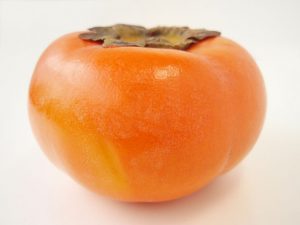
Persimmon is usually overlooked as a berry, same as a tomato. It has bright yellow skin and pulp. It grows widely in the tropical region and is used to intensify a cuisine’s flavor.
You can try persimmon raw or cooked, dry or fresh. Persimmon exudes both astringent and non-astringent flavors. If you want a yellow tropical fruit combining a sweet and tangy flavor, you can try a persimmon right now. Moreover, this fruit has a soft and fibrous texture, indicating the intricate presence of fibers.
Persimmon has a good nutrition profile that contains multivitamins and minerals. Persimmon has a significant effect on overall immunity. Vitamin C and iron are found in abundance in this yellow tropical fruit. It also contains dietary fibers, which will initiate a good peristalsis process.
11. Canistel
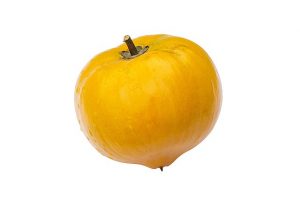
Canistel is widely known as egg fruit and yellow sapote and only grows in shallow, deep, and fertile soil. It’s mainly found in Mexico, El Salvador, and Guatemala and grows in some parts of the US, Asia, and Africa.
When you eat the raw and fresh core of the egg fruit, you’ll be surprised at the sweetest tinge it offers. Egg fruit can also be converted into marmalade or jelly. The sweet flavor is perfect for making a jam of it.
You’ll slowly observe the fantastic health benefits of this yellow tropical fruit if you eat them regularly. It improves cardiovascular health by eating up the bad cholesterol in the vessels. Niacin and niacinamide cram into these yellow tropical fruits and reduce exercise-induced pain by strengthening muscles.
Yellow tropical fruits with spiky skin
Yellow tropical fruits with spiky skin – now that’s something you don’t see every day! But these exotic fruits are more than just an oddity. In fact, they’re packed with flavor and nutrients that make them a must-try for any adventurous eater. So let’s dive into this prickly world of tropical fruits and see what all the fuss is about.
Pineapple
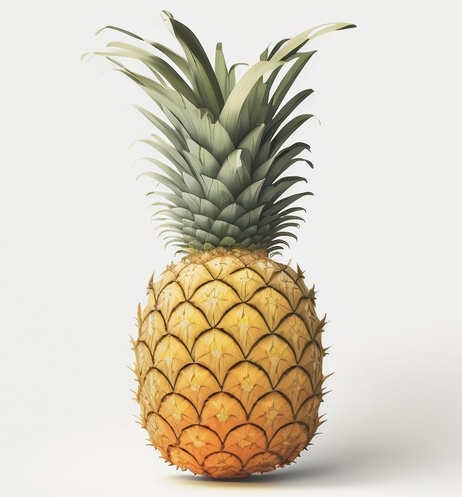
First up, we have the pineapple. You might think of it as a garnish for your piña colada, but this tropical fruit is a powerhouse of nutrients. And let’s be honest, who doesn’t love a fruit that comes in its own suit of armor? Don’t let its spiky exterior fool you – once you get past the tough skin, you’ll find sweet, juicy flesh that’s rich in vitamin C and an enzyme called bromelain, which can help with digestion. Plus, it’s a great conversation starter at parties – just try carrying one of these bad boys around and see if you don’t turn a few heads.
Durian
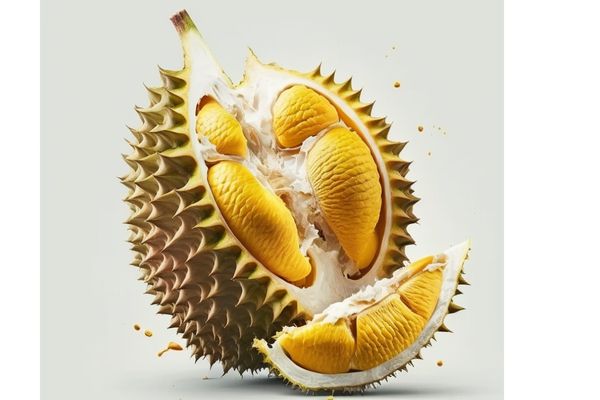
Next, we have the durian. Ah, the infamous durian – also known as the “king of fruits.” This tropical fruit may look like a spiky football, but don’t be fooled by its tough exterior. Inside, you’ll find creamy, pungent flesh that’s a bit of an acquired taste. But if you can get past the smell (which has been compared to everything from rotten onions to dirty socks), you’ll be rewarded with a fruit that’s packed with vitamins and fiber. Just be sure to eat it outdoors, unless you want your house to smell like a gym locker for the next week.
Rambutan
Moving on, we have the rambutan. Don’t let its soft, hairy spikes fool you – this tropical fruit is a real gem. With a sweet, juicy flesh that’s similar to lychee, rambutan is a great source of vitamin C and dietary fiber. Plus, its funky exterior makes it a great conversation starter (just be prepared for a few “what the heck is that?” questions).
Kiwano
Last but not least, we have the kiwano, also known as the horned melon. This spiky little fruit looks like something straight out of a sci-fi movie, but don’t let its appearance scare you off. Inside, you’ll find green, jelly-like flesh that’s packed with vitamins A, C, and E. Plus, its texture is similar to cucumber, so it’s a great addition to salads or smoothies. Just be careful when cutting it open – those spikes can be sharp!
Yellow tropical fruits with spiky skin may look a little strange, but they’re definitely worth a try. Whether you’re sipping a piña colada with a pineapple wedge, holding your nose as you try durian for the first time, or marveling at the funky exterior of a kiwano, these exotic fruits are sure to bring a little adventure to your plate. So go ahead, be a little prickly and try something new – you just might discover your new favorite fruit!
Last But Not The Least
If you want your meal platter to look exotic and aristocratic, put some yellow tropical fruits on the table. It’s wise to use them to embellish the meal platter for your guest. You can also put a rainbow of fruits and vegetables to enhance the beauty. But remember to check your lust till the guest arrive. If you think we should add any popular yellow tropical fruit to this list, let us know right below in the comment box.

